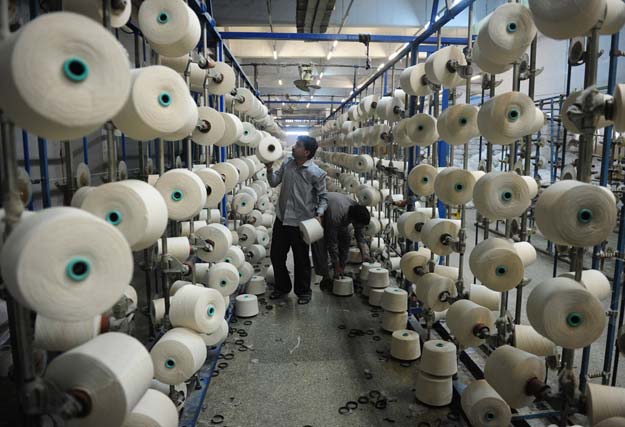
“The import of textile machinery reached the peak of almost $1 billion in 2004-05. Since then, it has fallen to less than $500 million annually,” said the IPR in a fact sheet on the state of the textile industry on Thursday.
Another key factor was persistent energy shortages with frequent outages limiting the effective capacity and raising production cost due to power generation through their own means.
According to the think tank, a full-fledged textile ministry is working and the government has also announced textile policy for 2014-19, but despite this the industry appears to be languishing due to neglect and lack of policy implementation.

Exports of the textile sector, which ships over 60% of output to overseas buyers, have stood stagnated below $14 billion annually for the last four years compared to growth of 10% per year from 2001-02 to 2010-11.
“This came despite a cumulative depreciation of 19% in the rupee’s value and the recent grant of GSP Plus status by the European Union,” the IPR said, pointing out that the latter had led to some diversion of exports, without substantially increasing the global volume of shipments.
In the last four years, Pakistan has been steadily losing market share to competitors. In textiles, India, Turkey and Vietnam have achieved a significant growth in exports whereas in clothing, Bangladesh, Cambodia, Indonesia, Sri Lanka and Thailand have edged out Pakistan.
Apart from this, Pakistan’s yarn exports to China, which accounts for almost 70% of total exports of the product globally, fell 20% in 2014-15.
Of late, the appreciating rupee has left textile products expensive in the international market. According to the State Bank of Pakistan, the rupee is now overvalued by 18%.
On the other hand, many countries devalued their currencies significantly last year with India cutting the rupee’s value by 6% against the dollar, Turkey 30%, Indonesia 15%, Thailand 9% and Vietnam 3%.
Chinese yuan, backed by foreign exchange reserves of $3.9 trillion, has fallen 3% in the past few days. Earlier, Japanese yen depreciated by 22%.
“What our policymakers probably do not realise is that there is a low-intensity trade war going on in the face of slow growth in world trade, especially of imports by the EU, Japan and the US,” the think tank commented.
The IPR recommended two policy options. Either the government should move away from its policy of maintaining the nominal exchange rate and adjust it downwards, at least to the extent of rise in costs due to recent tax moves and pricing of electricity.
Alternatively, if the government is unwilling to abandon the exchange policy, then it may opt for an export rebate scheme covering most exports.
Published in The Express Tribune, August 21st, 2015.
Like Business on Facebook, follow @TribuneBiz on Twitter to stay informed and join in the conversation.


1732538123-0/BeFunky-collage-(90)1732538123-0-165x106.webp)

1732536148-0/ariana-(1)1732536148-0-165x106.webp)



1732486769-0/image-(8)1732486769-0-270x192.webp)








COMMENTS (1)
Comments are moderated and generally will be posted if they are on-topic and not abusive.
For more information, please see our Comments FAQ